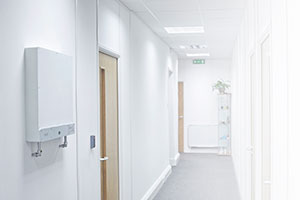The myriad guidelines, regulations and ratings governing housebuilding mean it can become quite overwhelming. This is especially true for housing associations who have to sift through reams of paperwork to make sure they’re compliant.
So, when you think you’ve heard quite enough about procedure, I’m going to take this opportunity to highlight another, one which I think is going to drastically and positively change the way homes are heated.
The imminently to-be-published SAP 10 is hotly anticipated across the housebuilding industry. Fundamentally, it will contain a number of developments on existing frameworks. This ranges from guidance on thermal bridging to addressing the root causes of overheating in the home. For a more detailed overview CIBSE Journal has published a wide-ranging summary.
For me, as the founder of an infrared heating brand, SAP 10 offers a hugely significant change which will disrupt both the UK energy and central heating  market. Primarily, there will be a change in fuel and CO2 factors which will see the emission factor for electricity reduced from 0.519 kgCO2/kWh to 0.233 kgCO2/kWh.
market. Primarily, there will be a change in fuel and CO2 factors which will see the emission factor for electricity reduced from 0.519 kgCO2/kWh to 0.233 kgCO2/kWh.
No doubt many will be aware of the government’s desire to phase out gas boilers within new builds by 2025, reflecting its commitment to reduce our reliance on fossil fuels. It also emphasises the energy market’s commitment to adopting greener production methods to supply a de-carbonised National Grid. The re-calibration outlined in SAP 10 makes electrical heating solutions more viable for housing associations and compliant for assessors. It’s now a truly cost-effective alternative.
For decades, particularly since World War II, we have adopted a conventional (and some might say narrow) view towards central heating, with little innovation. Essentially we live in a convection society where developments have merely been to make boilers marginally more efficient year-on-year. I think SAP 10 is about to kick-start innovation in this sector, particularly where electrical solutions are concerned.
The central heating market is currently playing catch-up with the energy sector. My hope is that SAP 10 will act as a catalyst to give it a long-awaited boost.
There’s much to be excited about, with a large number of cutting-edge, electricity-based solutions coming onto the market at the moment. It’s important we convince housing associations (if not the whole construction sector) that the advent of SAP 10 makes these systems both affordable and more efficient than gas-based ones.
David Bowen, CTO and Founder, Logicor
- Log in to post comments















